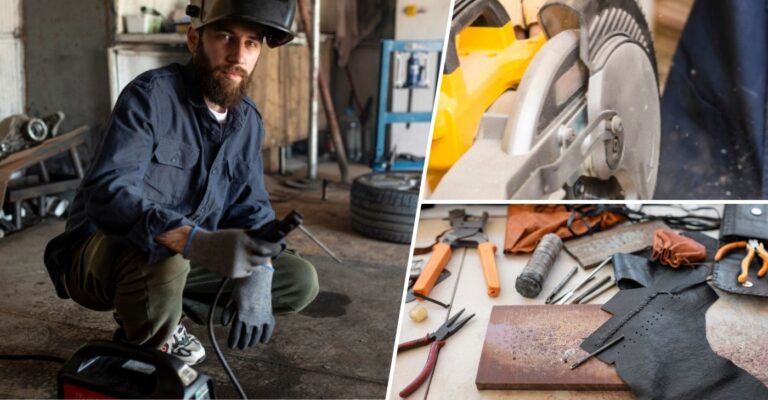Home Fire Prevention: Simple Steps to Protect Your Family
Home fires pose a significant risk to families, often leading to devastating consequences. According to the National Fire Protection Association (NFPA), home fires cause thousands of deaths and injuries each year, along with billions of dollars in property damage. However, many home fires can be prevented with proactive measures. One such measure is obtaining a London Fire Safety Certificate, which ensures that your home meets essential safety standards. This blog will outline simple yet effective steps you can take to protect your family and home from the threat of fire..
Understanding Common Causes of Home Fires
Before diving into prevention strategies, it is important to understand the common causes of home fires:
- Cooking: The leading cause of home fires, often due to unattended cooking or grease fires.
- Heating: Space heaters, fireplaces, and chimneys that are not properly maintained can lead to fires.
- Electrical: Faulty wiring, overloaded circuits, and electrical equipment can spark fires.
- Smoking: Carelessly discarded smoking materials can ignite fires.
- Candles: Unattended candles are a common fire hazard.
- Children: Curious children playing with matches or lighters can accidentally start fires.
Knowing these common causes can help you take targeted actions to mitigate risks.
Step 1: Install Smoke Alarms
Smoke alarms are your first line of defense against fires. They provide early warning, allowing you and your family to evacuate quickly.
Key Actions:
- Install smoke alarms on every level of your home, including inside bedrooms and outside sleeping areas.
- Test alarms monthly to ensure they are working correctly.
- Replace batteries annually or as needed.
- Replace smoke alarms every 10 years or according to the manufacturer’s instructions.
Step 2: Develop a Fire Escape Plan
Having a well-thought-out fire escape plan can save lives by ensuring that everyone in your household knows how to exit safely during a fire.
Key Actions:
- Create a map of your home showing all exits and escape routes.
- Designate a meeting place outside your home where everyone will gather after escaping.
- Practice your fire escape plan at least twice a year with all family members, including children and pets.
- Teach children how to escape on their own in case you cannot help them.
Step 3: Use Cooking Safety Measures
Since cooking is the leading cause of home fires, it is essential to practice safe cooking habits.
Key Actions:
- Never leave cooking unattended, especially when using oil or high temperatures.
- Keep flammable items, such as towels and paper, away from the stove.
- Turn pot handles inward to prevent accidental spills.
- Have a fire extinguisher in the kitchen and know how to use it.
Step 4: Practice Electrical Safety
Electrical fires can be prevented by taking a few precautions with your home’s electrical system and appliances.
Key Actions:
- Inspect electrical cords for damage and replace any that are frayed or worn.
- Avoid overloading outlets by plugging in too many devices.
- Use surge protectors to safeguard your electronics.
- Hire a licensed electrician to perform regular inspections and address any electrical issues.
Step 5: Be Cautious with Heating Equipment
Heating equipment, if not used properly, can be a major fire hazard.
Key Actions:
- Keep space heaters,at least three feet away from anything flammable.
- Never leave heaters unattended, especially when you leave a room or go to sleep.
- Have your chimney inspected and cleaned annually, to prevent creosote buildup.
- Use a fire screen, in front of your fireplace to catch sparks and embers.
Step 6: Store Flammable Materials Safely
Proper storage of flammable materials can significantly reduce the risk of fire.
Key Actions:
- Store gasoline, propane, and other flammable liquids in approved containers and away from living areas.
- Keep matches and lighters out of reach of children.
- Follow manufacturer instructions for storing and using chemicals and cleaning supplies.
Step 7: Be Mindful of Candle Use
Candles add ambiance but can also pose a fire risk if not used safely.
Key Actions:
- Never leave candles unattended.
- Keep candles away from flammable items such as curtains and furniture.
- Use sturdy candle holders that won’t tip over easily.
- Extinguish candles before leaving a room or going to sleep.
Step 8: Educate Your Family About Fire Safety
Education is a powerful tool in preventing home fires and ensuring everyone knows what to do in an emergency.
Key Actions:
- Teach children the dangers of fire and the importance of fire safety.
- Show family members how to use fire extinguishers and where they are located.
- Discuss the importance of not hiding during a fire and getting out quickly instead.
Step 9: Regular Home Maintenance
Regular home maintenance can help identify and mitigate potential fire hazards before they become a problem.
Key Actions:
- Clean dryer lint traps after each use and the dryer vent regularly.
- Check and maintain your HVAC system to prevent dust and debris buildup.
- Inspect your roof and gutters to remove any leaves or debris that could catch fire.
Step 10: Invest in Fire Safety Equipment
Having the right fire safety equipment can make a significant difference in preventing and responding to fires.
Key Actions
Install fire extinguishers in key areas such as the kitchen, garage, and near fireplaces.
Consider installing a sprinkler system in your home for added protection.
Keep fire blankets accessible in case of small fires.
Conclusion
Home fire prevention is about being proactive and prepared. By taking these simple yet effective steps, you can significantly reduce the risk of fire in your home and ensure the safety of your family. Install smoke alarms, develop a fire escape plan, practice safe cooking, and consider obtaining safety certifications. For landlords, Landlord Certification provides essential landlord safety certificates, ensuring rental properties meet crucial safety standards. If you want to stay updated with posts like this, please follow us on IBusinessDay.







